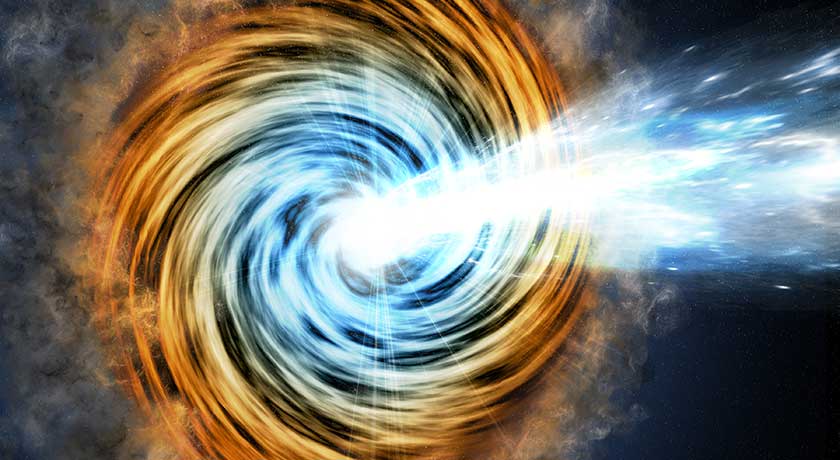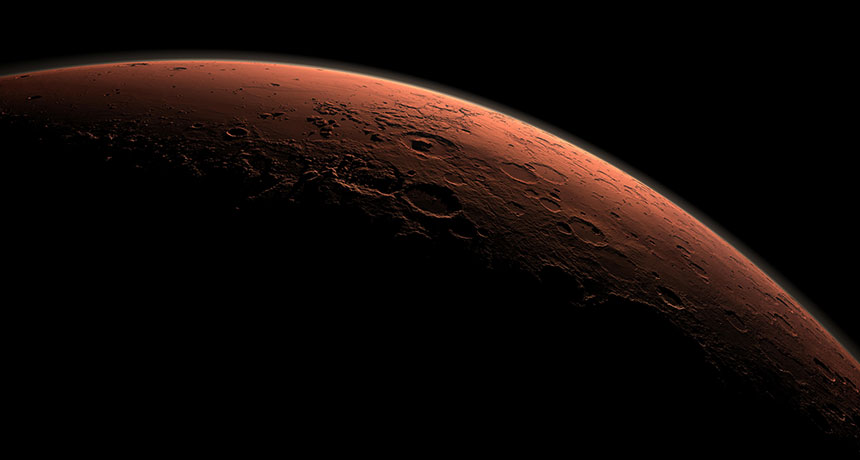Possible source of high-energy neutrino reported

Scientists may have found the cosmic birthplace of an ultra-high energy neutrino. They point the finger at a blazar — a brilliantly luminous galaxy that shoots a jet of radiation in the direction of Earth — 9 billion light years away.
If the link between the blazar and neutrino is real, scientists would be closer to long-sought answers about where such power-packing particles come from. Violent astronomical accelerators boost some neutrinos to high energies, but scientists have never been able to convincingly identify their sources.
Neutrinos are aloof elementary particles that rarely interact with other matter — they can sail straight through the Earth, and trillions of them zip through your body every second without a trace. On December 4, 2012, the neutrino in question (which scientists have affectionately nicknamed Big Bird) slammed into the Antarctic ice with an energy of around 2 million billion electron volts. The neutrino observatory IceCube glimpsed the aftermath of the collision and measured its energy with sensitive detectors embedded deep in the ice (SN Online: 04/07/14), leaving scientists hustling to pinpoint its source.
The blazar flared up at just the right time and place to be a prime suspect, researchers report in a paper accepted for publication in a peer-reviewed journal. The result, now available online at arXiv.org, strengthens the case that blazars are the source of such high-energy neutrinos, but it is no smoking gun.
After the neutrino was detected, a team of astrophysicists scoured the heavens for energetic galaxies with TANAMI, short for Tracking Active Galactic Nuclei with Austral Milliarcsecond Interferometry, a network of telescopes peering into space at a variety of wavelengths. That team reported one likely candidate blazar.
But the candidate is not a surefire match, says IceCube leader Francis Halzen of the University of Wisconsin–Madison, who was not involved with the analysis. IceCube could determine the neutrino’s direction within only about 15 degrees on the sky, and the blazar flare-up continued for several months. The probability of such a chance concurrence between an unrelated neutrino and blazar is about 5 percent, the researchers say — too big to rule out chance. “It’s a very intriguing result,” says Halzen “but it’s not a proof.”
The matchup between the blazar and neutrino is noteworthy, even though the researchers can’t fully rule out the possibility that the match is a fluke, says astrophysicist Xiang-Yu Wang of Nanjing University in China, who was not involved with the research. “Given that the two events are very unique … I think it’s convincing.” Wang and colleagues have expanded on the result: In a paper accepted for publication in Physical Review Letters, they use the difference in arrival time between the neutrino and light from the blazar’s outburst — assuming the two are related — to test Einstein’s special and general theories of relativity. Certain theories of quantum gravity predict a delay in the arrival of a neutrino. (Einstein came out unscathed.)
The authors of the blazar study declined to comment on the result, citing the embargo policy of the journal where the paper will be published.
To convincingly identify a blazar as the source of a neutrino, Halzen says, scientists will need a better measurement of the neutrino’s direction, connected to a short-lived blazar outburst. In the future, Halzen says, IceCube will send out “astronomical telegrams” when it detects a neutrino, directing telescopes to take a look, perhaps catching a blazar in the act.








